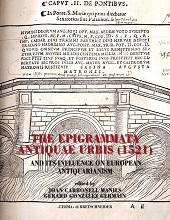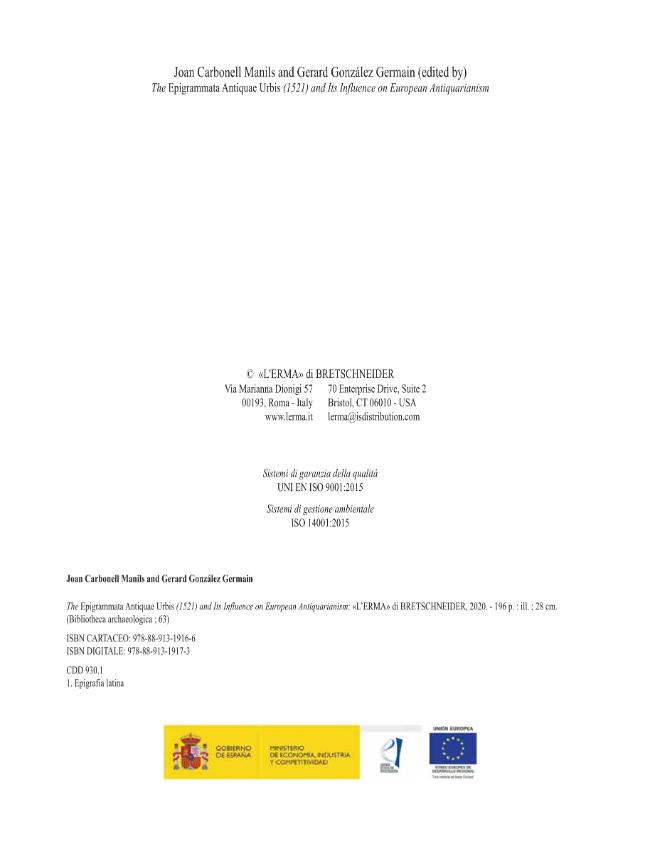The Epigrammata Antiquae Urbis (1521) and its influence on European antiquarianism
194 pages : illustrations (some color)
Includes bibliographical references (pages 169-179) and indexes.
The publication of the Epigrammata Antiquae Urbis (Rome, Giacomo Mazzocchi, 1521) was a determining factor in the development of Roman studies in the 16th-century. As the first collection of classical inscriptions from the city of Rome, it set the example for subsequent epigraphic corpora, and became an exceptional witness to Rome's antiquities before the Sack of 1527. In the papers collected in this book, leading researchers in the field explore several aspects of the Epigrammata's composition and reception: Mazzocchi's editorial program, the question of its anonymous authorship, and the sources from which the book derived; the annotated copies of Latino Giovenale Manetti and Benedetto Egio;
the circulation of the book among 16th-century transalpine humanists; a recension of the copies kept at the Vatican Library and in several American collections; the sifting of the Epigrammata for the collections of Martinus Smetius and Sanloutius; and the relevance of the Renaissance manuscripttradition for the knowledge of the epigraphy from the city of Rome. These studies are supplemented with the first ever list of known copies of the Epigrammata Antiquae Urbis, which registers over three hundred copies worldwide. [Publisher's text]
Contributions in English, Italian, and Spanish.
Papers presented in Bellaterra, Spain, January 24-25, 2019.
-
Chapters from the same volume (available individually)
-
Information
ISBN: 9788891319173
DISCIPLINES
SUBJECTS HEADINGS
- Epigrammata Antiquae Urbis -- Congresses
- Inscriptions, Latin -- Italy -- Rome -- Early works to 1800 -- Congresses
- Inscriptions, Latin -- Study and teaching -- Europe -- History -- Congresses
- Early printed books -- Europe -- Congresses



